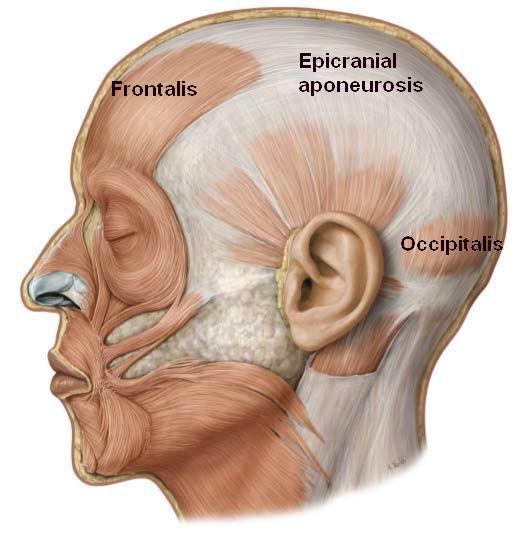Table of Contents
Introduction
In the quest for youthful-looking skin, understanding the intricate mechanisms that contribute to facial aging is crucial. One such factor often overlooked is the role of Scalp’s Aponeurotic Layer, the wide tendon plate situated beneath the scalp. In this comprehensive guide, we delve into the effects of apon epicranial aponeurosis eurosis on facial aging and explore effective strategies to mitigate its impact.
What is Epicranial aponeurosis?
The epicranial aponeurosis (or galea aponeurotica), also called aponeurosis epicranialis, is part of the muscles and tissues that shape our head. It is a tissue that connects the frontal and occipital region of our head.
Over time, this tendon plate loses its elasticity and mobility, becoming tightly bound to the skull. Consequently, as galea aponeurotica contracts, it restricts blood circulation, leading to a tightening effect akin to wearing an iron helmet. This tightening not only affects the scalp but also manifests in visible facial changes, including drooping eyelids, downturned corners of the eyes, and the formation of deep wrinkles.

The Impact on Facial Appearance
As Scalp’s Aponeurotic Layer tissues adhere more tightly to the scalp with age, they form adhesions and undergo spasms. Individuals with poor posture, such as habitual slouchers, may experience further complications. In such cases, the frontal-occipital muscle’s occipital belly pushes the aponeurosis forward, causing it to shift over the frontal belly of the muscle. This displacement leads to facial deformities, disrupting blood circulation, lymph flow, and nutrition in the affected area. Consequently, the skin on the upper third of the face develops folds and creases, contributing to an aged appearance.
Effective Strategies to Combat the Effects of Aponeurosis
- Fortunately, proactive measures can help mitigate the impact of aponeurosis on facial aging. Massage therapy targeted at the aponeurosis offers significant benefits by promoting scalp relaxation and preventing dryness, a common precursor to age-related facial changes. Regular massage sessions involving gentle manipulation of the scalp in various directions can effectively improve blood circulation and lymphatic drainage, thereby rejuvenating facial skin.
- Additionally, individuals can incorporate scalp exercises into their daily routine to maintain aponeurosis mobility. Simple exercises such as using fingertips to manipulate the scalp or gently pulling the hair roots can stimulate blood flow and loosen tight Scalp’s Aponeurotic Layer. However, it’s essential to perform these exercises with caution and avoid excessive force, as undue pressure may cause discomfort or injury.
Diagnosing Aponeurosis Tightness
Assessing the condition of aponeurosis involves a simple yet informative test. By grasping a strand of hair from the roots and attempting to move the skin, individuals can determine the degree of aponeurosis tightness. If the skin resists movement or moves minimally, it indicates restricted aponeurosis mobility. However, the good news is that with consistent massage and targeted exercises, aponeurosis tightness can be alleviated, restoring vitality to the scalp and facial features.
Conclusion
In the pursuit of ageless beauty, understanding the role of Epicranial aponeurosis in facial aging is paramount. By recognising the impact of aponeurosis tightness on facial appearance and implementing proactive measures to address it, individuals can maintain a youthful and vibrant complexion. Through face massage therapy, scalp exercises, and diligent self-assessment, the effects of aponeurosis on facial aging can be mitigated, allowing individuals to embrace their best selves at any age.
References
- The Facial Aging Process From the “Inside Out”. Arthur Swift, MD,1 Steven Liew, MD,2 Susan Weinkle, MD,3 Julie K Garcia, PhD,4 and Michael B Silberberg. https://www.ncbi.nlm.nih.gov/pmc/articles/PMC8438644/
- Facial Aging: a Clinical Classification. Melvin A. Shiffman. https://link.springer.com/book/10.1007/978-3-540-71097-4
- Objective Analysis of Age-Related Changes in the Superficial Musculoaponeurotic System in Japanese Females. Itsuko Okuda, MD, PhD,corresponding author Katsuhiro Abe, RT, MHSc, Naoki Yoshioka, MD, PhD, Takayoshi Komemushi, MD, PhD, Masahiro Jinzaki, MD, PhD, and Hiroyuki Ohjimi, MD, PhD. https://www.ncbi.nlm.nih.gov/pmc/articles/PMC10270653/